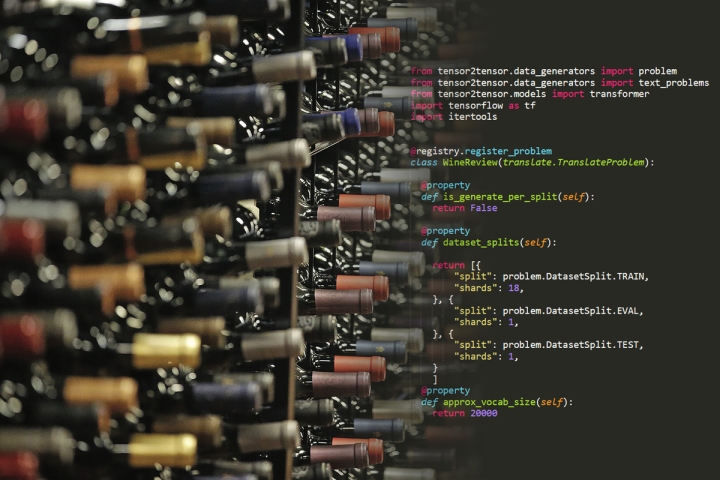In mid-2020, the computer science team of Keith Carlson, Allen Riddell and Dan Rockmore was stuck on a problem. It wasn’t a technical challenge. The computer code they had developed to write product reviews was working beautifully. But they were struggling with a practical question.
“Getting the code to write reviews was only the first part of the challenge,” says Carlson, Guarini ’21, a doctoral research fellow at the Tuck School of Business, “The remaining challenge was figuring out how and where it could be used.”
The original study took on two challenges: to design code that could write original, human-quality product reviews using a small set of product features and to see if the algorithm could be adapted to write “synthesis reviews” for products from a large number of existing reviews.
Review writing can be challenging because of the overwhelming number of products available. The team wanted to see if artificial intelligence was up to the task of writing opinionated text about vast product classes.
They focused on wine and beer reviews because of the extensive availability of material to train the algorithm. The relatively narrow vocabularies used to describe the products also makes it open to the techniques of AI systems and natural language processing tools.

The project was kickstarted by Riddell, a former fellow at the Neukom Institute for Computational Science, and developed with Carlson under the guidance of Rockmore, the William H. Neukom 1964 Distinguished Professor of Computational Science.
The code couldn’t taste the products, but it did ingest reams of written material. After training the algorithm on hundreds of thousands of published wine and beer reviews, the team found that the code could complete both tasks.
One result read: “This is a sound Cabernet. It’s very dry and a little thin in blackberry fruit, which accentuates the acidity and tannins. Drink up.”
Another read: “Pretty dark for a rosé, and full-bodied, with cherry, raspberry, vanilla and spice flavors. It’s dry with good acidity.”
“But now what?” Carlson explains as a question that often gnaws at scientists. The team wondered, “Who else would care?”
“I didn’t want to quit there,” says Rockmore. “I was sure that this work could be interesting to a wider audience.”
Sensing that the paper could have relevance in marketing, the team walked the study to Tuck Drive to see what others would think.
“Brilliant,” Praveen Kopalle, the Signal Companies’ Professor of Management at Tuck School of Business, recalls thinking when first reviewing the technical study.
Kopalle knew that the research was important. It could even “disrupt” the online review industry, a huge marketplace of goods and services.
“The paper has a lot of marketing applications, particularly in the context of online reviews where we can create reviews or descriptions of products when they may not already exist,” adds Kopalle. “In fact, we can even think about summarizing reviews for products and services as well.”
With the addition of Prasad Vana, assistant professor of business administration at Tuck, the team was complete. Vana reframed the technical feat of creating review-writing code into that of a market-friendly tool that can assist consumers, marketers, and professional reviewers.
The resulting research, published in International Journal of Research in Marketing, surveyed independent participants to confirm that the AI system wrote human-like reviews in both challenges.
“Using artificial intelligence to write and synthesize reviews can create efficiencies on both sides of the marketplace,” said Vana. “The hope is that AI can benefit reviewers facing larger writing workloads and consumers who have to sort through so much content about products.”
The paper also dwells on the ethical concerns raised by computer-generated content. It notes that marketers could get better acceptance by falsely attributing the reviews to humans. To address this, the team advocates for transparency when computer-generated text is used.
They also address the issue of computers taking human jobs. Code should not replace professional product reviewers, the team insists in the paper. The technology is meant to make the tasks of producing and reading the material more efficient.
“It’s interesting to imagine how this could benefit restaurants that cannot afford sommeliers or independent sellers on online platforms who may sell hundreds of products,” says Vana.
According to Carlson, the paper’s first author, the project demonstrates the potential of AI, the power of innovative thinking, and the promise of cross-campus collaboration.
“It was wonderful to work with colleagues with different expertise to take a theoretical idea and bring it closer to the marketplace,” says Carlson. “Together we showed how our work could change marketing and how people could use it. That could only happen with collaboration.”

